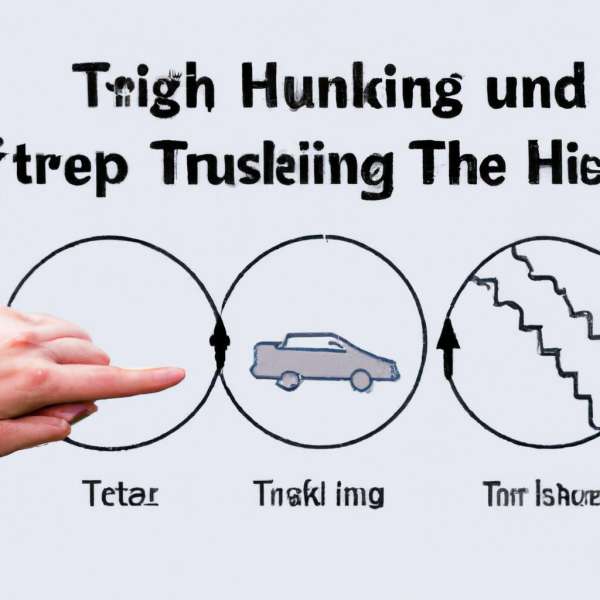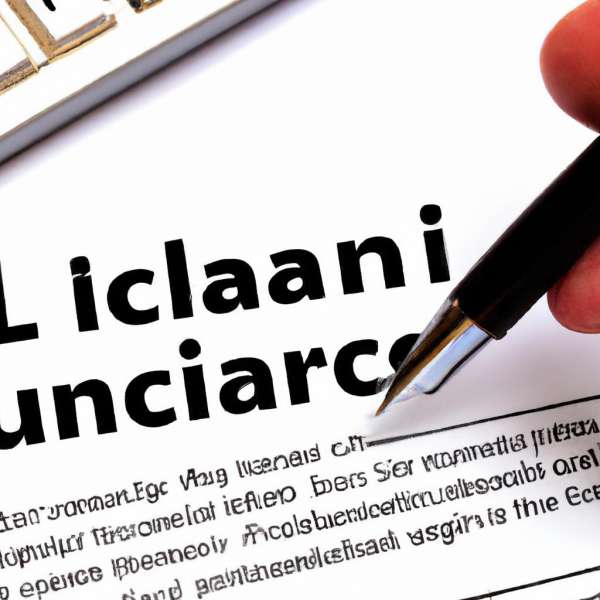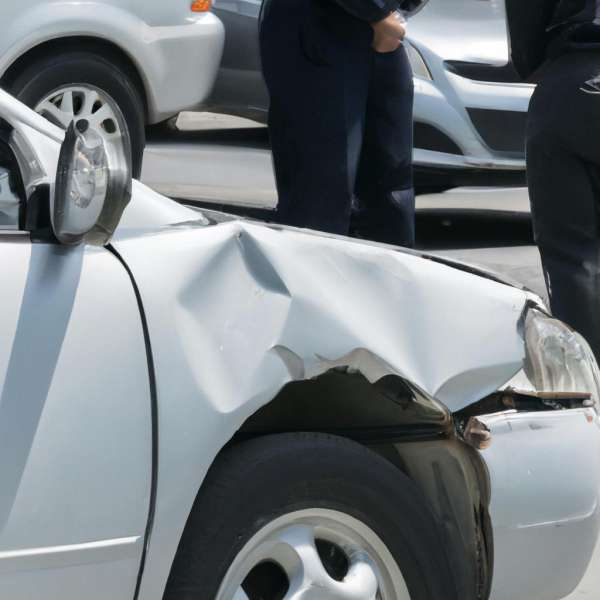Title: Navigating the Aftermath: A Guide to Handling Hit-and-Run Accidents
Accidents are an unfortunate reality of driving, and the road can sometimes take unexpected turns—literally. Among the myriad of vehicular mishaps that can occur, hit-and-run incidents stand out as particularly distressing. In the blink of an eye, a moment of negligence can turn into a jarring experience, leaving victims grappling not only with physical damage but also the emotional turmoil that follows. Amidst the confusion and frustration, knowing how to respond effectively is crucial. This article serves as a comprehensive guide to help you navigate the complexities of hit-and-run situations, ensuring that you can take the right steps to protect yourself, your rights, and your peace of mind. From immediate actions to long-term considerations, we’ll explore the essential strategies for handling the aftermath of such incidents with clarity and confidence.

Understanding the Immediate Steps to Take After a Hit-and-Run Incident
Experiencing a hit-and-run can be incredibly distressing, and knowing what steps to take immediately afterward is crucial for your safety and for any subsequent legal or insurance claims. Start by ensuring your own safety first. If you are in a position to do so, move to a safe location away from traffic, as lingering in the roadway can expose you to further danger.
Next, gather as much information as possible about the incident. This can include:
- Details of the accident: Document the time, location, and any conditions that may have contributed to the accident such as weather or visibility.
- Witness accounts: Identify any pedestrians or drivers who may have witnessed the incident and collect their contact information.
- License plate and vehicle description: If the fleeing vehicle had any visible markings, colors, or other identifying features, make a note of them.
After you’ve made a thorough record, it’s essential to contact the police. They can provide a report, which is vital for insurance purposes. When the officers arrive, provide them with all the relevant information you’ve collected. This report could be pivotal in tracking down the responsible driver. Subsequently, following the accident, reach out to your insurance company to report the incident and start the claims process.
don’t underestimate the importance of healthcare. Even if you feel fine, injuries may not always present immediately. Ensure you visit a healthcare professional to rule out any hidden injuries. Keeping a detailed account of your medical evaluations and expenses can be advantageous if you decide to pursue compensation later.

Gathering Evidence and Information to Support Your Case
In the aftermath of a hit-and-run accident, gathering evidence and information is crucial to building a strong case. Start by documenting the scene as thoroughly as possible. Utilize your smartphone to capture high-quality photographs of:
- The vehicles involved: Show their positions, damages, and license plates.
- The surroundings: Take pictures of street signs, signals, and any nearby landmarks.
- Injuries: If applicable, document any visible injuries you or your passengers sustained.
Witnesses can play a pivotal role in corroborating your account of the incident. If there were bystanders who observed the accident, approach them politely and ask for their contact information. Remember to:
- Ask open-ended questions: Encourage them to share what they saw without leading their responses.
- Record their statements: Jot down key points or use your phone for an audio recording (with their permission).
Another essential aspect of gathering information is obtaining a copy of the police report. When law enforcement arrives at the scene:
| Document | Details to Include |
|---|---|
| Police Report | Date, time, and location of the incident |
| Witness Information | Name and contact details of witnesses |
| Accident Report Number | Assigned by the responding officer |
reach out to your insurance company promptly to report the accident and share any information you have gathered. This proactive approach can facilitate a smoother claims process and increase your chances of recovering damages for repairs, medical expenses, and other losses incurred due to the accident.

Navigating Insurance Claims and Legal Options
When faced with the aftermath of a hit-and-run accident, understanding your insurance claims and legal options is crucial. First, it’s vital to gather all the relevant information that will support your claim. This includes:
- The make and model of the other vehicle, if known.
- A description of the incident, noting the time and location of the accident.
- Any witness statements or contact information.
- Photographic evidence of damages and the scene.
Once you have compiled this information, reach out to your insurance provider. Depending on your policy, you might have coverage for uninsured motorists, which can help offset any expenses caused by the accident. Be prepared to explain the details thoroughly. Your insurer may also advise you on the next steps regarding police reports and additional documentation needed for your claim.
If the accident results in significant damages or injuries, consider seeking legal counsel. A lawyer specializing in personal injury or traffic accidents can provide invaluable assistance as you navigate complex legal waters. They can help determine if there are grounds for a lawsuit based on negligence or other legal avenues. Remember, **time** is of the essence; statutes of limitations can impose strict deadlines on claims. Here’s a quick overview of potential legal actions:
| Legal Action | Description |
|---|---|
| Insurance Claim | Seeking compensation through your insurance provider. |
| Personal Injury Lawsuit | Filing a claim against the responsible party, if identified. |
| Uninsured Motorist Claim | Claiming damages under your policy for hit-and-run incidents. |
Ultimately, having a clear understanding of your options can greatly affect your recovery process after a hit-and-run. Knowledge of both insurance and legal recourse ensures you’re not left without support during a challenging time.

Preventative Measures to Reduce the Risk of Hit-and-Run Accidents
Reducing the risk of hit-and-run accidents requires a proactive approach from all road users. By practicing awareness and responsibility, drivers can create a safer environment for themselves and others. Implementing the following practices can significantly lower the chances of being involved in such incidents:
- Stay Alert: Always be attentive while driving. Avoid distractions such as texting, eating, or adjusting the radio.
- Use Your Mirrors: Regularly check your mirrors for pedestrians or vehicles that may be in close proximity.
- Follow Speed Limits: Adhering to speed limits allows for better reaction time and decreases the severity of accidents.
- Communicate Your Intentions: Use turn signals early when changing lanes or making turns to inform other drivers of your movements.
In addition to personal driving habits, educating others about road safety can contribute to minimizing hit-and-run incidents. Consider organizing community workshops or informational sessions to discuss the importance of responsible driving. Here’s a simple checklist for drivers to ensure they are being conscientious on the road:
| Checklist Item | Status |
|---|---|
| Check blind spots | ✔️ |
| Maintain a safe following distance | ✔️ |
| Be cautious at intersections | ✔️ |
| Remain patient in traffic | ✔️ |
Lastly, engage in discussions about the consequences of hit-and-run incidents. Awareness campaigns can emphasize the legal repercussions and moral implications, encouraging drivers to take responsibility for their actions on the road. By fostering a culture of accountability and respect, we can collectively work towards significantly reducing hit-and-run accidents.
In Summary
In the aftermath of a hit-and-run accident, the road ahead may feel daunting and uncertain. However, understanding how to navigate the complexities of such situations can empower you to take charge and protect your rights. By remaining calm, gathering critical information, and seeking legal guidance when necessary, you can transform a disheartening experience into an opportunity for recovery and resolution. Remember, while the driver who fled may have disappeared, your path to justice and healing is still very much within reach. Stay informed, stay vigilant, and let these actionable steps guide you towards regaining control. Your journey doesn’t end here; it’s just the beginning of turning misfortune into resilience.





